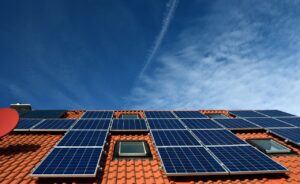Anticipate an expenditure ranging from $5,400 to $18,000 for an average solar system, which typically falls within the 6kW to 12kW range. Once installation costs are factored in, this range expands to $6,600 to $22,800. It’s important to note that eligible residential solar systems purchased through 2032 qualify for a 30% federal solar tax credit, potentially reducing the cost to a range of $4,600 to $16,000.
Solar System Material Costs by Size
Here’s a closer look at solar system material costs by various sizes:
- 6kW System: Producing an average annual output of 8,000 – 10,000 kWh, this system has an average cost ranging from $6,600 to $11,400 before the federal tax credit. After the credit, the cost decreases to $4,600 – $8,000.
- 8kW System: With an annual output of 10,500 – 13,300 kWh, the cost for this system ranges from $8,800 to $15,200 before the tax credit, dropping to $6,200 – $10,600 after the credit.
- 10kW System: Generating 13,300 – 16,700 kWh per year, this system’s cost ranges from $11,000 to $19,000 before the federal tax credit. After applying the credit, the cost is reduced to $7,700 – $13,300.
- 12kW System: Providing an average annual output of 16,000 – 20,000 kWh, this system comes with an average cost of $13,200 to $22,800 before the tax credit, which can bring the cost down to $9,200 – $16,000.
Factors Influencing Solar Panel Costs

Solar panel costs depend on two crucial factors:
Amount of Sunlight
The amount of sunlight your location receives is a primary driver of cost disparities. For instance, if you reside in sun-soaked California, you’ll likely require fewer solar panels to meet your energy needs than someone in North Dakota. Solar power tends to be more cost-effective in regions with abundant sunlight and less so in areas with lower sun exposure, such as Alaska.
Local Incentives
Location matters, but it’s not the sole determinant. Some sunny states may lack robust solar power incentives and net metering programs, while less sunny states can offer attractive incentives.
For instance, Alabama, despite its sunshine, may have limited net metering policies, whereas Washington, with less sunlight, boasts excellent net metering programs. It’s crucial to consider local and state incentives when evaluating the cost of your solar panels.
Resources like the Database of State Incentives for Renewables and Efficiency (DSIRE) can help you explore policies and incentives that may lower your solar panel system costs.
Price Per Watt
On average, the cost to install solar panels per watt for materials falls within the range of $0.90 to $1.50, with an additional 25% for labor. This means that the total cost per watt typically varies between $1.10 and $1.90, depending on the specifics of your installation.